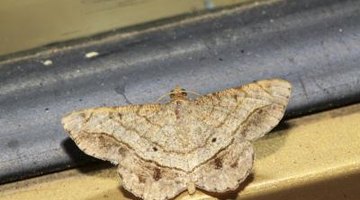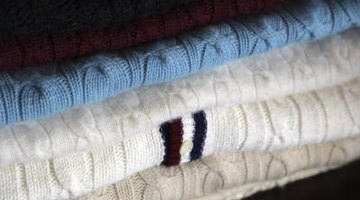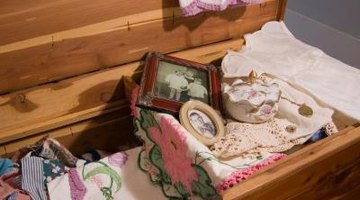How to Use Moth Balls
Use moth balls to prevent or eliminate a moth infestation. Moth balls have insecticides that vaporize at room temperature and kill larvae that hatch from the eggs left on garments by adult moths. Fumes from moth balls are harmful to humans and pets, so precautions must be followed.

But with proper use, moth balls will control moths on stored items.
Things You Will Need
- Moth Balls
- Airtight Storage Containers
Warning
Never use moth balls in cardboard boxes, drawers, cabinets or chests that do not seal. Open moth ball storage containers outdoors, in an open garage or in a well-ventilated room. Do not expose yourself moth ball odors for a long period.
-
Read the label directions on the moth ball package. That label is actually a legal document containing guidelines for permissible use. Follow all label directions explicitly.
-
Use moth balls to protect natural fibers. Moth larvae prefer to eat animal fibers like wool. They do not eat synthetics so there is no need for moth balls when storing rayon, nylon or polyester garments.
-
Use moth balls to protect garments that will be stored for more than a month. Laundering eliminates moth problems for clothes and bedding that gets washed on a regular basis.
-
Use moth balls in airtight containers only. Place moth balls with textiles containing natural fibers inside garment bags, storage containers or trunks and seal them closed. If you detect moth ball odor outside the container, it is not airtight.
-
Select appropriate sizes and amounts of moth balls for items and containers. Use one 1/4-inch moth ball for a single shirt stored in a gallon-size zip bag. Place two or three 1/2-inch diameter moth balls in a large storage bag with several garments, and up to four 1-inch moth balls inside a large trunk.





The Drip Cap
- Use moth balls to prevent or eliminate a moth infestation.
- Laundering eliminates moth problems for clothes and bedding that gets washed on a regular basis.
- Use moth balls in airtight containers only.
- If you detect moth ball odor outside the container, it is not airtight.
Writer Bio
Jonra Springs began writing in 1989. He writes fiction for children and adults and draws on experiences in education, insurance, construction, aviation mechanics and entertainment to create content for various websites. Springs studied liberal arts and computer science at the College of Charleston and Trident Technical College.
Photo Credits
- lnzyx/iStock/Getty Images
- lnzyx/iStock/Getty Images
- Jupiterimages/Photos.com/Getty Images
- spaceshark/iStock/Getty Images
- AVAVA/iStock/Getty Images
- Pattie Steib/iStock/Getty Images
- Jupiterimages/BananaStock/Getty Images
More Articles



